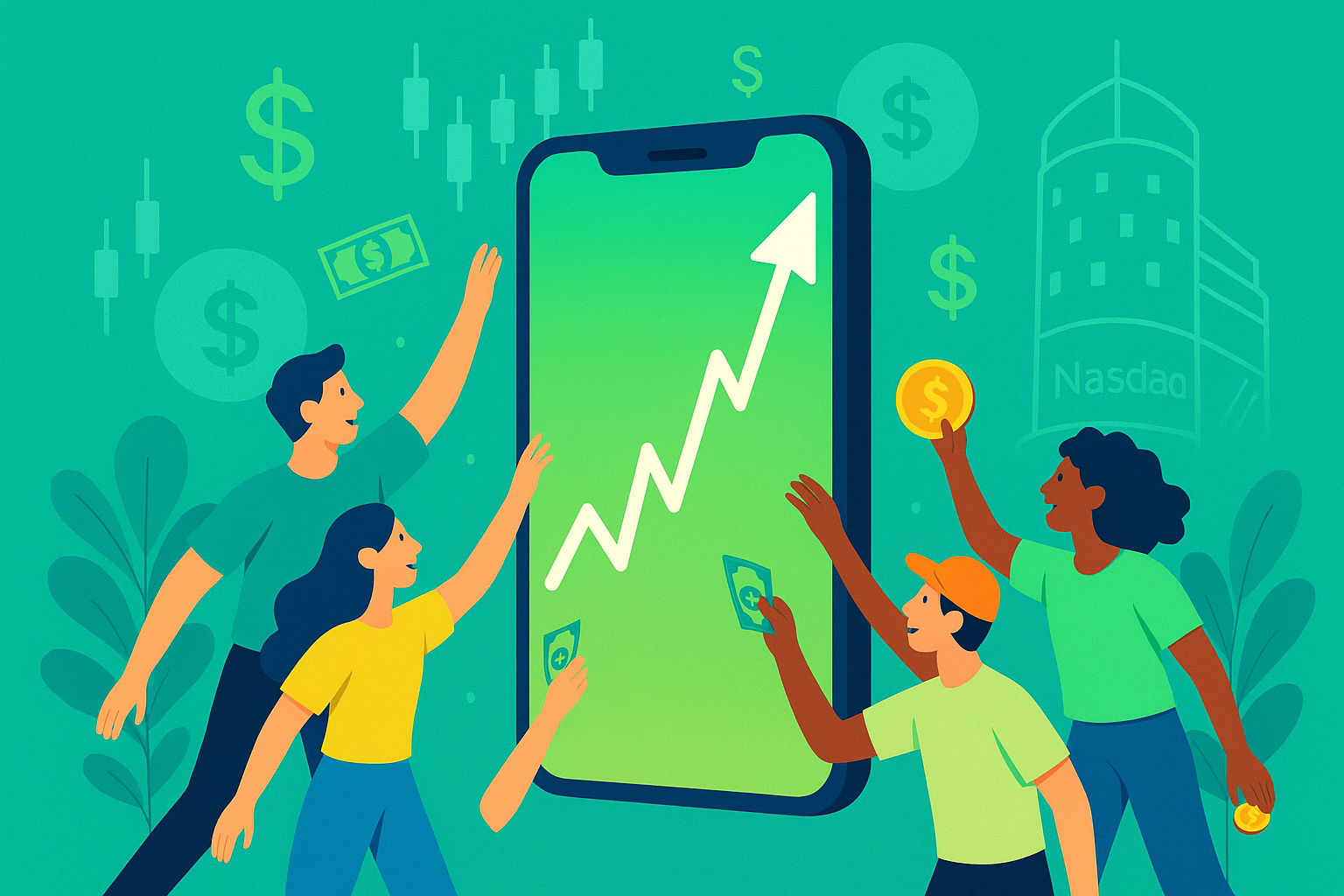
In the vast and rapidly evolving world of financial technology, few names have captured both the imagination and ire of investors like Robinhood (NASDAQ:HOOD). Launched with the audacious goal of democratizing finance for all, the company upended decades-old brokerage models, changed how young investors access the stock market, and weathered crises that shook Wall Street to its core. This is the story of how Robinhood transformed from a Silicon Valley upstart into a household name—and a lightning rod for controversy in modern investing.
The Origins: Silicon Valley’s Answer to Wall Street
Robinhood was founded in 2013 by two Stanford graduates, Vladimir Tenev and Baiju Bhatt, who saw an opportunity in a market dominated by traditional brokers charging commissions for every trade. Inspired by their backgrounds in finance and technology, the duo set out to build a platform that would give anyone, regardless of wealth, the ability to participate in the stock market for free.
By 2015, Robinhood officially launched its commission-free stock trading app, instantly setting itself apart from legacy firms. The company’s name, a direct nod to the folklore hero who “took from the rich and gave to the poor,” captured the public’s imagination—and so did its vibrant, minimalist app design aimed at mobile-first Millennials and Gen Z users.
Breaking Down Barriers: The Zero-Commission Revolution
Robinhood’s most groundbreaking move was its zero-commission trading model. At a time when most brokers charged between $5 and $10 per trade, Robinhood made stock trading as simple as downloading an app and swiping a finger. This seismic shift forced giants like Charles Schwab, E*TRADE, and TD Ameritrade to follow suit, sparking a price war that permanently changed the landscape of retail investing.
But Robinhood’s business model was not without controversy. Instead of charging commissions, Robinhood relied on a practice called payment for order flow (PFOF), in which it routed customer orders to high-frequency trading firms for execution in exchange for fees. While this allowed for free trades, it attracted scrutiny over conflicts of interest and the true “cost” of no-fee investing.
The Rise of the Retail Army
As Robinhood’s user base swelled, the app became synonymous with the new wave of retail investors—many of whom were young, tech-savvy, and willing to take risks. Robinhood popularized features such as fractional shares and instant deposits, making it easy for small-dollar investors to participate in the stock market and even dabble in cryptocurrencies.
The onset of the COVID-19 pandemic in 2020 supercharged Robinhood’s growth. Millions of Americans, stuck at home and flush with stimulus checks, downloaded the app and began trading stocks, options, and digital currencies. Robinhood’s simple interface, push notifications, and social media-friendly vibe made it a fixture on smartphones across the country.
GameStop, Meme Stocks, and a National Frenzy
Robinhood’s place in financial history was cemented during the GameStop saga of January 2021. A coordinated buying spree by retail investors on social media platforms sent shares of GameStop, AMC, and other “meme stocks” skyrocketing, inflicting massive losses on short-selling hedge funds. Robinhood became the preferred trading platform for the movement—until it halted trading on several volatile stocks due to liquidity concerns and collateral requirements from clearinghouses.
The trading restrictions sparked outrage among users, politicians, and the media. Congressional hearings, class-action lawsuits, and regulatory investigations ensued, shining a spotlight on Robinhood’s business practices, risk management, and its relationship with Wall Street’s biggest players. For many, the episode raised questions about market access, financial education, and the power of retail investors in the age of social media.
Going Public: The Next Chapter
In July 2021, Robinhood debuted on the Nasdaq exchange under the ticker (NASDAQ:HOOD). The public offering was as unconventional as the company itself: Robinhood reserved a significant portion of shares for its own customers, a move in line with its democratizing ethos. The stock’s performance has been as volatile as its user base, reflecting broader market cycles and shifting sentiment around fintech innovation, regulation, and retail trading.
Post-IPO, Robinhood expanded its product offerings to include retirement accounts, crypto wallets, and even credit cards. It faced competition from upstart rivals and established firms alike, all while navigating a more challenging regulatory landscape and a maturing user base seeking sophisticated tools and greater protections.
Legacy and Ongoing Impact
Today, Robinhood remains one of the most recognizable names in fintech. Its influence is undeniable: the company changed how Americans think about investing, made stock trading accessible to millions, and sparked industry-wide changes in fees and technology.
However, Robinhood’s journey has also served as a cautionary tale about the risks of gamifying finance and the fine line between democratization and speculation. As the company charts its future, it faces the dual challenge of maintaining growth while responding to calls for greater transparency, education, and responsibility.
Robinhood’s story—like the markets it helped transform—continues to unfold, embodying both the promise and peril of modern investing.
Disclaimer: This article is for informational purposes only and does not constitute investment advice. Please conduct your own research or consult a qualified financial advisor before making investment decisions.
